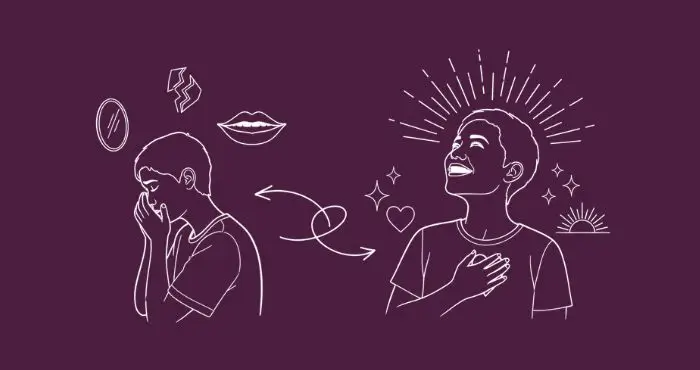We like to think of ourselves as logical beings, carefully understanding the pros and cons before making a purchase.
Agree?
But what if that’s not the full story?
The reality is, we don’t just make a transaction because of a features list or a price tag. We do it by emotion. That’s where Emotional Marketing plays a key role.
In 2025, understanding the core emotional triggers that drive consumer behavior is more important than ever.
Before you can sell a product or share a message, you must first earn the buyer’s attention and trust.
In today’s world, that means making a genuine connection.
Today, we’ll explore the most used psychological trigger that top salespeople and political leaders have relied on for decades to drive decisions.
This trigger focuses on using memory, feeling, and emotion to create persuasive copy that converts.
The Core of Emotional Marketing: Why People Buy Products on Emotion
In Emotional Marketing, people buy with emotion first and justify with logic later.
A customer might say they bought a car because of its fuel efficiency (logic).
But the decision was likely driven by how the car made them feel, successful, safe, or adventurous (emotion).
Your job as a marketer or salesperson is to connect with that emotional brain.
When you can trigger the right feeling, joy, relief, curiosity, or even a sense of urgency.
You create a powerful desire that logic then works to fulfill.
The following Powerful technique shows you exactly how you can do that.
Revivification in Emotional Marketing: Using Memory as a Persuasion Tool
If you want people to become your happy customers and buy your product, one simple way is to have them relive happy or exciting memories.
This makes them feel good, and they are more likely to say “yes” to your offer. This technique is a cornerstone of Emotional Marketing.
Revivification in sales is a hypnosis method that politicians, religious leaders, and even top salespeople use.
They use this to make people feel strong emotions.
The method works because the reader enters a state of enjoyment similar to the one we often experience.
For example, when people visit a calm, green, and beautiful place, they begin to relax and feel better.
They start entering an altered state of consciousness.
When you remind someone of a past happy experience.
They become more emotionally open and are more likely to accept new ideas, including buying your product.
You can use this technique to help a person immediately experience any mood, emotion, or affective state.
You can even take someone back to an almost childlike state of excitement, wonder, and joy.
Selling with Emotions Examples: The Positive Rewind
One proven Emotional Marketing tactic is to trigger positive memories.
Let’s look at how to trigger a positive memory.
You might ask your potential customer:
“Do you remember your first car and how happy you were when you bought it?”
The customer would subconsciously say:
“That was a wholesome moment, a joyful day. I remember when I got my first car.”
Then you offer your product, something like this:
“Well, we can’t give you your first car again. But with our luxury car air freshener, you can bring back that same fresh, new-car feeling every time you drive.”
Selling with Emotions Examples: The Negative Reframe
Now let’s flip the script and use the negative method to target unpleasant feelings.
This works perfectly when you remind your audience of a problem or discomfort, which brings up emotional tension.
When you do this, they become motivated to find a solution.
By offering your product as the answer, you help them resolve that negative feeling, making them more likely to buy.
For example:
You say to your customer:
“When was the last time you laughed out loud without fear of being judged for something that has quietly haunted you for years, like the slight yellow tint of your teeth?”
The customer might say:
“I’ve been hiding my smile for a couple of years because of a yellow tint on my teeth. And I don’t even remember the last time I laughed out loud without being feared of being judged.”
Then you say:
“With our natural homemade ingredients, you can get rid of the yellow tint on your teeth forever and laugh out loud again without worrying about being judged.”
In reliving these revived experiences, they enter a strong altered state of awareness.
The discomfort they feel makes them open to your solution, so when you offer your product, it feels like relief and hope.
Practical Emotional Marketing Techniques for Selling
When using emotions in copywriting, the goal is connection, not manipulation.
- Do: Focus on genuine problems and aspirations your audience has.
- Don’t: Invent fears or make exaggerated promises you can’t keep.
- Do: Use storytelling to make your examples relatable.
- Don’t: Use these techniques to pressure someone into a decision that isn’t right for them.
Authenticity is the foundation of persuasive sales copywriting.
Mastering emotional triggers in sales is about understanding people.
It’s about recognizing that behind every click and every purchase is a human being driven by hopes, fears, and memories.
By learning to connect with those emotions respectfully, you don’t just make a sale, you build a loyal customer.
If you want to take this one step further, this guide on how to sell without being salesy using ideosensory trance shows you how to help your audience emotionally experience the result before they even buy.

